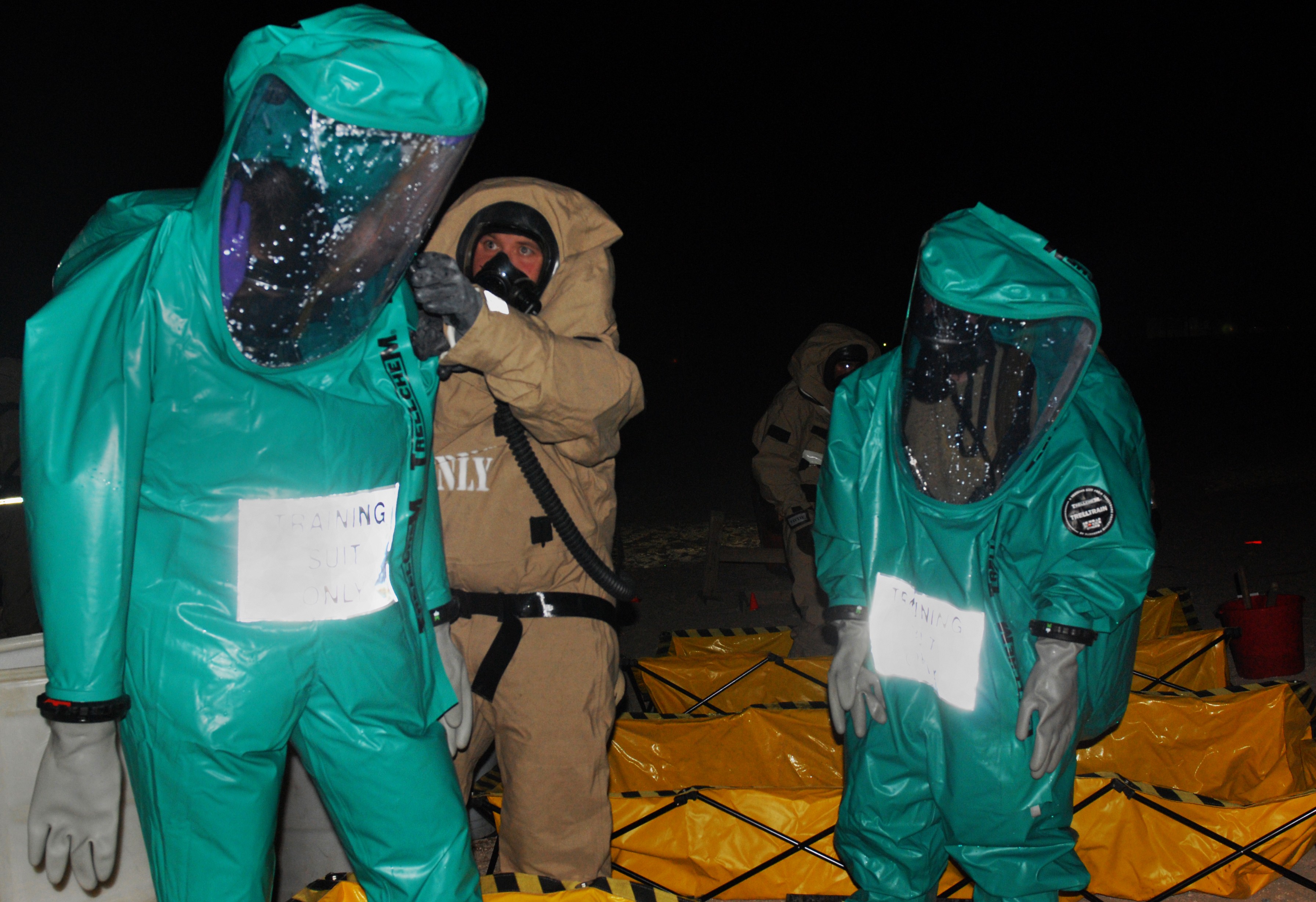ARLINGTON, Va., (Oct. 5, 2010) -- The National Guard has added a Homeland Response Force package to its current chemical, biological, radiological, nuclear and high-yield-explosive or CBRNE response capabilities.
The new HRF package should help provide a more robust response to any homeland incident, Guard officials said today. They added there will be 10 HRFs, one in each Federal Emergency Management Agency region, stood up by Oct. 1, 2012.
"This will allow us to save lives and mitigate human suffering as rapidly as possible," said Air Force Col. Tim Cathcart, the chief of the National Guard Bureau's joint training and education division.
The National Guard's current CBRNE Enhanced Response Force Package mission has 17 teams of 186 people each throughout the country providing a quick response to a weapon-of-mass-destruction incident, Cathcart said.
When activated, they initiate search and extraction from collapsed buildings, victim decontamination, medical triage and transport to stabilization facilities, where doctors will treat victims before they are moved to a hospital or designated medical facility, he said.
The purpose of the HRF mission is to create a bigger force providing command and control of multiple CERFPs, weapons-of-mass-destruction civil-support teams and other Guard assets during an incident, Guard officials said.
"A HRF is built around a CERFP, with some additional forces, which makes the total number of people activated for mission like this 566," said Cathcart. "You take the original 186 from the CERFP mission and add in force protection and a command and control capability, making sure everyone is integrated, knows what the mission is and maintains situational awareness of the incident."
The HRF mission also has a joint focus, which allows different services and agencies to learn from each other, work better, exercise better and feel more comfortable with capabilities and assets, he said.
Cathcart said NGB works very closely with its partners at U.S. Northern Command, U.S. Army North, the Joint Interagency Training and Education Center at Charleston, W.Va., and the U.S. Marine Corps.
"This creates an integrated Department of Defense CBRNE response construct where we share training and a similar understanding of the task and conditions that we are going to perform and at the same standards," he said.
The goal is to allow both National Guard and active-duty forces a faster response time over a wider area of coverage, because everyone will be moving at the same rate with the same plan, he said.
"It will help mitigate any redundancy or confusion during an actual response, allowing us to do a better job at working together as a team, because we have been training and planning for operating the same way we would be in that kind of environment," Cathcart said.
"It's going to make things simpler for us to make sure we're providing a better response to the nation because we've practiced and trained to similar standards."
(Tech. Sgt. John Orrell writes for the National Guard Bureau.)


Social Sharing